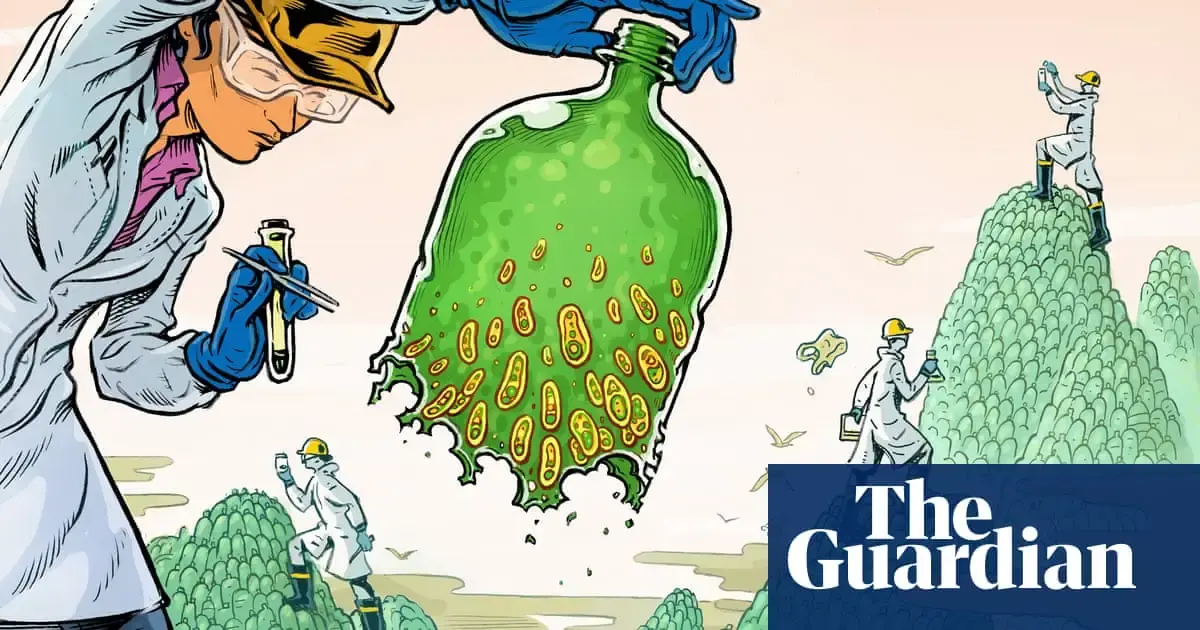
At the risk of sounding super ignorant the desire for plastic to biodegrade always seems really short-sighted to me? I understand that there are problems with plastic pollution for the ecosystem and that there may be health concerns with microplastics and whatnot… And that we probably shouldn’t make so many disposable items that we do want to degrade out of plastic (and that we should probably not have as many disposable items in the first place)… But plastics are also kind of miracle materials and ideally you want them to not break down in many use cases. Like, wouldn’t it be bad if all of a sudden we have bacteria that will eat through blood bags and plastic structures?
It seems like this article is mostly talking about studying microbes to design plastic eating enzymes that will help efficiently recycle plastic in the future, and that sounds super cool and very useful. But the whole “we should have bacteria that can quickly break down plastic in the environment” angle that I hear about a lot seems kind of risky to me because one of the reasons plastics are so awesome is that they’re very resistant to degradation… Maybe I’m just ignorant, though.

It’s not like they will rapidly destroy surfaces unless they are stored in conditions the bacteria thrive in. Likely needs to be kept like compost.
We have the same probrem with wood ya know and it does fine

Of course, I don’t think we’re actually in danger of bacteria suddenly eating through plastic like it’s a moldy apple or anything… Obviously wood is still hard to break down, and plastics aren’t too dissimilar. It’s just kind of cool that we can build something super cheaply out of plastic and it will hold up well in the elements without much care at all.

Except it doesn’t hold up in the elements all that well, though (at least in a form that is still usable, the plastic is still there, just in little pieces and/or without the desired structural integrity). Plastics degrade when exposed to sunlight and oxygen (photo-oxidation). Combine that with mechanical action of waves, and now you have a bunch of little plastic bits floating in the ocean that are even harder to clean up (but easier for the bacteria to eat!). A glass or metal bottle will hold up much better than a plastic one, over a long enough time period.
But they even break down when exposed to temperature cycling and mechanical stress over long periods of time. I’m sure you’ve also noticed old plastic food containers, get harder and harder to clean and start getting cloudy: that’s the plastic breaking down and micro-fissures appearing on the surface, thanks to repeated exposure to dishwashers, freezers, and still-hot leftovers. Once again, a glass dish is gonna hold up much better.
They have to use special additives for plastics intended for long-term outdoor use (the additives are like sunscreen for plastic, they absorb the UV so that the plastic doesn’t) to combat these reaction pathways. And I’d bet money that if plastic-eating bacteria end up becoming a problem, there will be additives we can use to discourage them for appropriate applications.
But you’ll notice that in the case of plastic in landfills, there’s no UV light from the sun, basically no oxygen, and any mechanical stress or temperature cycling isn’t enough for fast breakdown of the plastic polymers. These conditions are also very different from, say, your kitchen counter or hospital storage rooms. If the plastic-eating bacteria prefers the landfill habitat (or literally cannot thrive in any other environment – which is not an uncommon phenomenon; in the article, they mention difficulties culturing bacteria for study in a lab environment), then we have a perfect tool for breaking down landfill plastics that won’t impact in the slightest the plastics things we want to keep. Similarly, the kind of bacteria that could be useful for ridding us of fishing lines and nets floating around in the ocean would most likely not be well suited for non-aquatic environments.

I think that something like 70% of microplastic comes from car tires, our paper straws will not help with that issue.
I also think that plastic by itself is the least of a problem we have. As I understand it is just ugly on the landfill.
What is the problem is organic waste in plastic bags, with which we could be making compost but instead it is creating methane and increasing global warming.
Single use plastic is bad, but we do have other fronts that are easier to win.

A lot of the waste is single use plastics which don’t need to be that durable and are just trash after that single use.
There are lots of different types of plastic as well so this bacteria can likely only break down specific kinds.

You’ve just accidentally described the plot of 1970 sci fi classic Ringworld by Larry Niven! Great read.

The thing is, if they’re finding the relevant microbes to start this research with already eating plastic, then there are already naturally occurring plastic eating bacteria in the environment. Beyond that though, bacteria aren’t going to be able to degrade stuff to the same degree under every condition. Consider that wood is biodegradable, but we can build wooden structures and wooden objects that last for generations.

Exactly. The plastic we want them to eat is already degraded to some degree by the elements or usage, and is thus the low-hanging fruit. I’d assume it’s much easier to digest, since it’s partially broken down already and has plenty of convenient micro-fissures to exploit.

This is a reasonable concern, and there’s no way for us to know (from a simplified article/press release) whether proper precautions are being taken out of this is a corporate funded search for more cash.
The scenario is similar to invasive species brought to control certain pest populations, but the idea of bacteria causes problems is also a sci fi trope as well.

Breaking down plastic is already super super unappealing to any life form. The biggest reasons it’s so useful to us is because it’s basically super tightly woven strands which the engineered bacteria have to be forced to break apart, when the planet is filled with more readily available food like sugar molecules. The plastic eating bacteria they discover in the “wild” basically were isolated and surrounded only with plastic, and so had literally no other choice.
Releasing this bacteria into the wild won’t be an option (but given human nature it will remain an option), their use would likely be in closed facilities with big vats to break down plastic (operated by the lowest paid employees who can’t wait to skip the decontamination hallway because the football game is tonight).

Them skipping the imaginary decontamination hallway wouldn’t be a problem because of exactly what you outlined in your first paragraph
🤖 I’m a bot that provides automatic summaries for articles:
Click here to see the summary
When any living organism wishes to break down a larger compound – whether a string of DNA, or a complex sugar, or plastic – they turn to enzymes, tiny molecular machines within a cell, specialised for that task.
Enzymes work by helping chemical reactions happen at a microscopic scale, sometimes forcing reactive atoms closer together to bind them, or twisting complex molecules at specific points to make them weaker and more likely to break apart.
For most of the roughly 200 years we have been seriously studying them, microbes were in a sort of scientific jail: mainly assumed to be pathogens in need of eradication, or simple workhorses for a few basic industrial processes, such as fermenting wine or cheese.
About 25 years ago, the consensus among scientists was that there were probably fewer than ten million species of microbes on the planet; in the past decade, some new studies have put the number as high as a trillion, the vast majority still unknown.
A recent critical review in the journal Nature noted that many kinds of plastics would probably never be efficiently enzymatically digested, because of the comparatively huge amount of energy required to break their chemical bonds.
“There is not exactly a market incentive to clean up our waste, whether it’s CO2, or plastic,” says Victor di Lorenzo, a scientist at the Spanish National Biotechnology Centre in Madrid, and an evangelist for the large-scale application of microbes to solve humanity’s problems.
Saved 95% of original text.

This summary did not do the article justice at all.

Looks like it just summarised the introduction.

I found this bot often lacking tbh :/

Literally sitting in a pub surrounded by things now in plastic that were once in clay and glass, sad we have to move further into the deep end to fix what we’ve done


